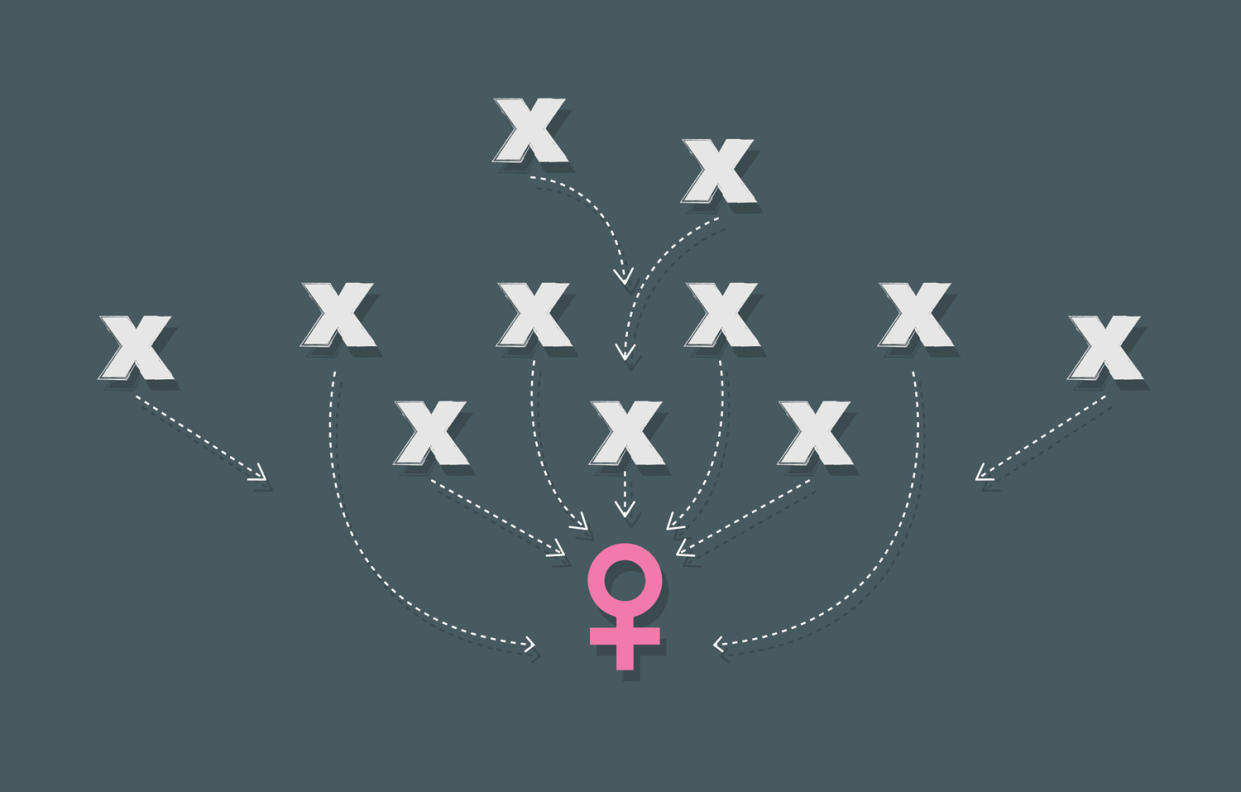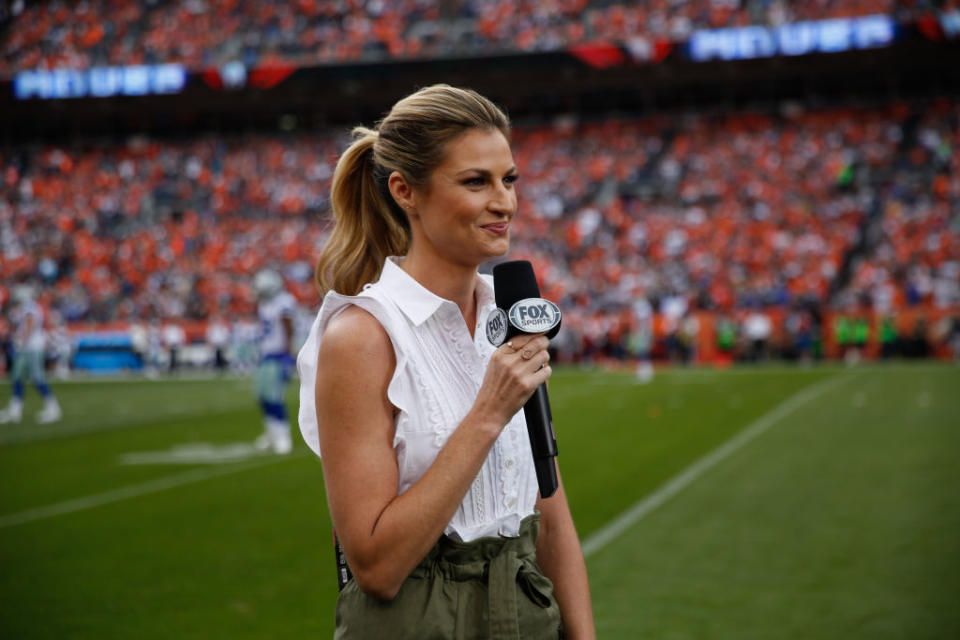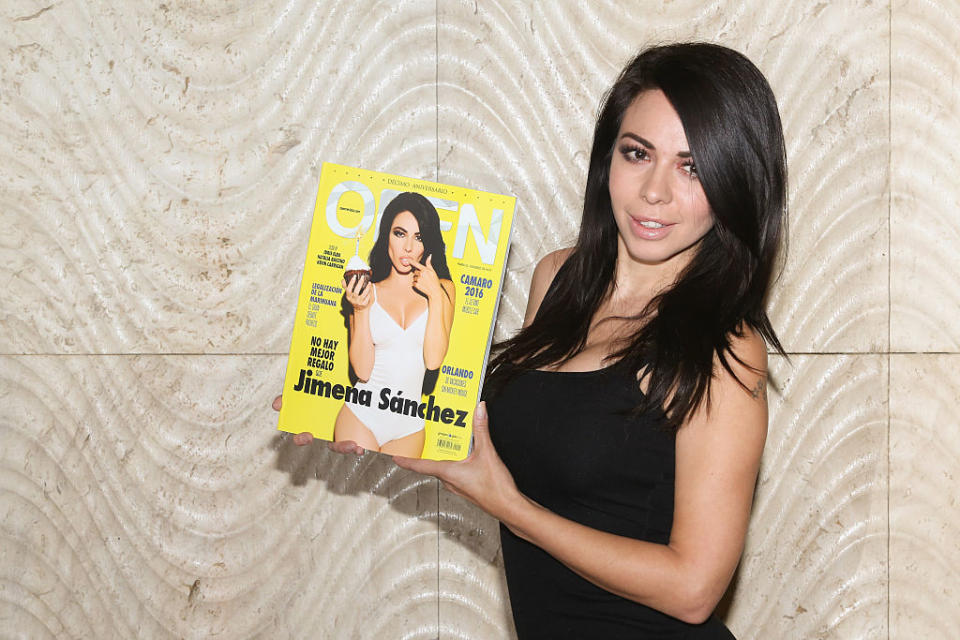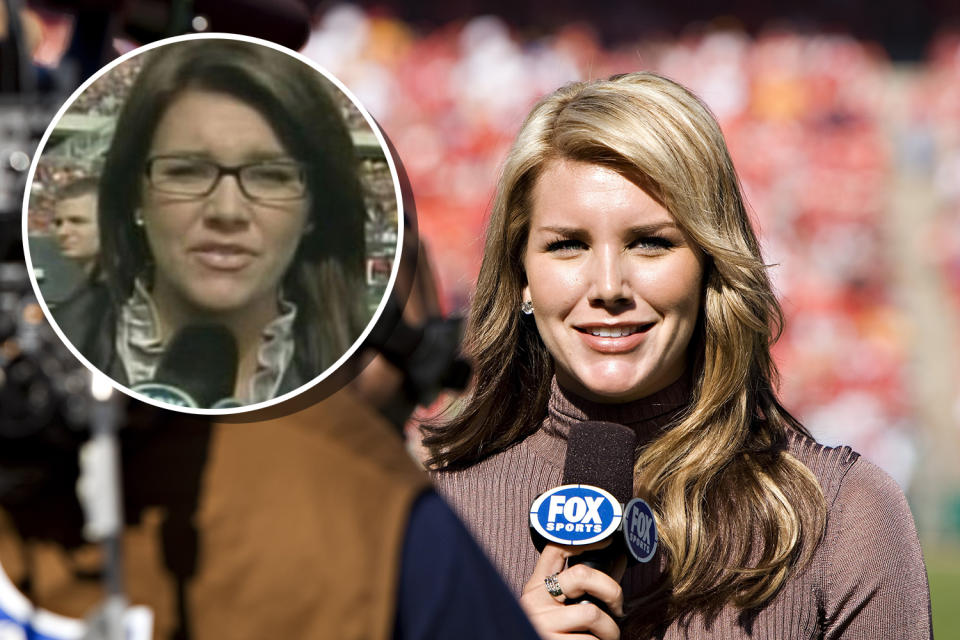'Feminine' and blond but never 'shrill': Why female sportscasters look sexy on the field

When Carolina Panthers quarterback Cam Newton laughed at sports reporter Jourdan Rodrigue for asking a question about routes recently — “It’s funny to hear a female talk about routes,” he said with a smirk (apologizing later, after Dannon Oikos dropped him from its ads) — he added to a running list of examples that show women in sports media being belittled for simply doing their jobs.
But the incident also drew attention to another aspect of the sexism that women who are sportscasters confront regularly: that of the carefully constructed, perfectly feminine, never-too-threatening image that seems to be such a requirement of the job.
The landscape reflects a deeply embedded sexism in the world of sports media — which Cheryl Cooky, associate professor of American studies at Purdue University, refers to as “a mediated man cave created by sports news and sports broadcasting” that “retains this kind of fantastical world where men are the center and women are literally and figuratively on the sidelines, there for men’s entertainment,” she tells Yahoo Lifestyle.

“The attractiveness level of female [sports] reporters, especially female reporters on television, is astronomical compared to men,” she adds. “Male commentators may be attractive, but it’s not a job requirement.”

Consider that, before the recent Cam Newton incident, Rodrigue could hardly be considered a household name. And unlike her peers, say, Jimena Sanchez or Charissa Thompson, she hasn’t appeared on any “Hottest Babes in Sports” media rankings — a vehicle through which some women in the biz are catapulted to fame. Nor has Rodrigue appeared on any magazine covers wearing a bikini or a green bustier crop top and bodycon miniskirt, as has the popular Erin Andrews (who recently made headlines for wearing a sequin blazer on the field).
In fact, an internet search of “top female sportscasters” yields a list largely populated by young, blond, ultra-feminine women, as well as countless rankings of the “hottest female sports broadcasters,” “hottest women of ESPN ,” and 15 of Fox Sports’ “hottest babes.”
A post shared by Erin Andrews (@erinandrews) on Oct 12, 2017 at 1:10pm PDT
What you won’t find in a ranking of the “top female sportscasters” are names like Beth Mowins, the first woman in 30 years to call the plays for an NFL game (along with two men) or Lesley Visser, the only sportscaster ever — male or female — who has worked on Final Four, NBA Finals, World Series, Triple Crown, Monday Night Football, the Olympics, the Super Bowl, the World Figure Skating Championships, and the U.S. Open network broadcasts.
A post shared by Charissa Thompson (@charissajthompson) on Sep 21, 2017 at 3:56pm PDT
Regardless of what women in sports media have achieved since they began covering athletics in 1975, it seems as though the most well-known figures remain those not with Emmy Awards or Hall of Fame honors, but those with magazine spreads in Maxim or Playboy. (The first female sportscaster, Phyllis George, began her career as Miss America 1971.)
Academics and researchers have long studied what happens when women enter the hyper-masculine world of sports. Jamie Skerski, a communications professor at the University of Colorado-Boulder, wrote a book on the subject, From Sidelines to Centerfolds: The Commodification of Female Sportscasters, in which Skerski describes a world in which women occupy three primary tropes: cheerleaders, sexualized sidekicks, and feminized “gossips.”
Washington Post Nationals reporter Chelsea Janes can attest to, at the very least, being mistaken for the first.
When I asked to go to Wrigley, cab driver asked if I was a cheerleader. Said yes this time. It was easier.
— Chelsea Janes (@chelsea_janes) October 9, 2017
“I do think it is largely about safely incorporating women into an industry defined by masculinity without disrupting the underlying values,” Skerski explains to Yahoo Lifestyle regarding the constant gendered evaluation. “Women are ‘allowed to enter’ if they hold up those heterosexual ideals and don’t rock the boat.”
Michela Musto, a University of Southern California researcher and co-author of a report on subtle sexism of women in sports, has another theory: “A lot of research has found that women athletes overemphasize cultural signs of womanhood to ensure they are perceived as sufficiently feminine in spite of their athleticism,” Musto tells Yahoo Lifestyle. “Since sports media remains an overwhelmingly male-dominated institution, women reporters might face similar, sexist pressures.”
As indicated by all those rankings of the hottest women in sports media, heterosexual ideals still include things like wearing clothes that are feminine but don’t make you look like you’re trying too hard; nailing the “no-makeup makeup look”; making sure your voice is in no way “shrill,” triggering memories of a nagging wife-mother-girlfriend-sister type; and, for the love of God (see also: Roger Goodell), do not deprive people of a blonde on the field (talking to you, Charissa Thompson.)

Laurie Graham King, a Dallas-based stylist whose clients frequently appear on sports broadcasts (as does Graham King herself) confirms as much, describing a client who worked for the NFL Network and was “encouraged to look feminine, but in a tasteful way.”
“You don’t want to be the girl who’s trying too hard and looks desperate, then you’re just going to be the laughingstock,” Graham King tells Yahoo Lifestyle.
There are official dress codes in addition to the unofficial guidelines that stylists like Graham King points out. In 2011, Major League Baseball instituted a dress code for media, including the ban of open-toe shoes, shorts, bare midriffs, and tank tops. In response to those who implied the dress code might be sexist (how many men wear tank tops on a baseball field?) Susan Slussler, vice president of the Baseball Writers’ Association of America, said, simply, “Don’t dress like a hobo and don’t dress like a ho, those are the extremes they’re looking at.”
It’s important to note that embracing femininity is not a bad thing, and that women sportscasters who also pose for a men’s magazine aren’t to blame for what Marie Hardin, dean of the College of Communications at Penn State University and a former sports reporter herself, calls a “cultural problem.”
“There’s a lot of finger pointing, but the truth is, if we had fans who were much more willing to turn off the TV set or turn away from imagery of women that doesn’t appropriately acknowledge their expertise, things might change,” she tells Yahoo Lifestyle.
One sports reporter with a particularly unique insight on gender bias in the biz is Christina Kahrl (pictured below), a transgender woman covering Major League Baseball for ESPN, who has had the experience of working in the industry as both a man and a woman.

During her first trip back to work after transitioning, Kahrl sat in the press box at the Robert F. Kennedy stadium, waiting for a Washington Nationals game to begin. “An old AP reporter was sitting next to me and saw me with my scorecard,” she tells Yahoo Lifestyle, “and he turns and says, ‘You know, if you need any help with that, I can help you.’ I just laughed and said, ‘I’ve been keeping score for 30 years. I think I know what I’m doing.'”
Karhl reflects on the moment, adding, “I thought, ‘So, that’s what being patronized in a professional environment feels like. That never would have happened to me before. Suddenly, I show up in heels and a skirt and it’s an automatic, unthinking assumption on the part of this particular gentleman that I might need help. It wasn’t malicious, but it was automatic, patriarchal.”
But for as innumerable are the cases in which women in sports media are patronized for doing their jobs, Skerski notes that we’ve been moving in the right direction — albeit slowly and not without hiccups — since she published her book in 2013.
“There are more women behind the desks at ESPN, Beth Mowins has been in the broadcast booth for NFL games, and Jessica Mendoza offers commentary for MLB,” Skerski says.
Even Deadspin, the same site that attacked Charissa Thompson for her hair color change nearly a decade ago, has put an end to its sexist articles, doing a complete 180 by calling out sexist internet commenters. Its current editor, Tim Marchman, tells Yahoo Lifestyle, “It’s a little unnerving how sports media generally works. Women are judged very openly and particularly on their appearance in a way men aren’t.”
Any back-patting in the world of sports media is premature, Skerski says. “Google female sportscasters, and you’ll see the sexualization that still exists. And women are by far more likely to be criticized, berated, and trolled online for simply being a woman in a man’s domain.”
Finally, Skerski adds, “Female sports reporters need to have extra thick skin — or are encouraged to show skin to enhance their value. Both are obviously troublesome.”
Read more from Yahoo Lifestyle:
Here’s how Cam Newton’s sexist comment sounded to women in sports
Panthers’ Cam Newton dons ‘Rosie the Riveter’ button on flight to Detroit
Women are adding ‘Mrs.’ to their LinkedIn titles to avoid unwanted sexual advances
Follow us on Instagram, Facebook, and Twitter for nonstop inspiration delivered fresh to your feed, every day.


